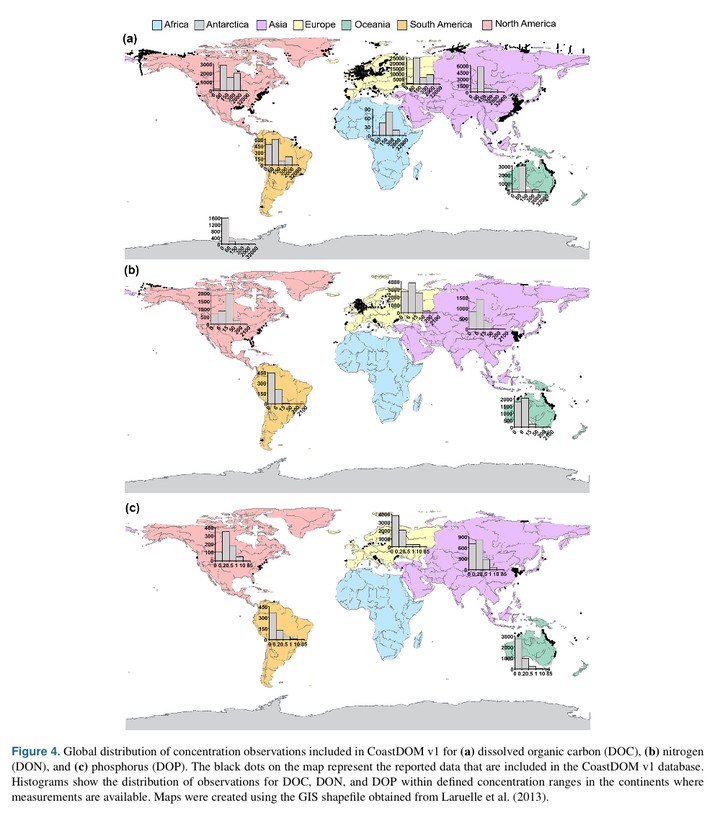A global database of dissolved organic matter (DOM) measurements in coastal waters, CoastDOM v1

Abstract
Measurements of dissolved organic carbon (DOC), nitrogen (DON), and phosphorus (DOP) con- centrations are used to characterize the dissolved organic matter (DOM) pool and are important components of biogeochemical cycling in the coastal ocean. Here, we present the first edition of a global database (CoastDOM v1; available at https://doi.org/10.1594/PANGAEA.964012, Lønborg et al., 2023) compiling previously pub- lished and unpublished measurements of DOC, DON, and DOP in coastal waters. These data are complemented by hydrographic data such as temperature and salinity and, to the extent possible, other biogeochemical variables (e.g. chlorophyll a, inorganic nutrients) and the inorganic carbon system (e.g. dissolved inorganic carbon and total alkalinity). Overall, CoastDOM v1 includes observations of concentrations from all continents. However, most data were collected in the Northern Hemisphere, with a clear gap in DOM measurements from the Southern Hemisphere. The data included were collected from 1978 to 2022 and consist of 62 338 data points for DOC, 20 356 for DON, and 13 533 for DOP. The number of measurements decreases progressively in the sequence DOC > DON > DOP, reflecting both differences in the maturity of the analytical methods and the greater focus on carbon cycling by the aquatic science community. The global database shows that the average DOC concen- tration in coastal waters (average ± standard deviation (SD): 182 ± 314 μmol C L−1 ; median: 103 μmol C L−1 ) is 13-fold higher than the average coastal DON concentration (13.6 ± 30.4 μmol N L−1 ; median: 8.0 μmol N L−1 ), which is itself 39-fold higher than the average coastal DOP concentration (0.34±1.11μmolPL−1; median: 0.18 μmol P L−1 ). This dataset will be useful for identifying global spatial and temporal patterns in DOM and will help facilitate the reuse of DOC, DON, and DOP data in studies aimed at better characterizing local biogeochem- ical processes; closing nutrient budgets; estimating carbon, nitrogen, and phosphorous pools; and establishing a baseline for modelling future changes in coastal waters.